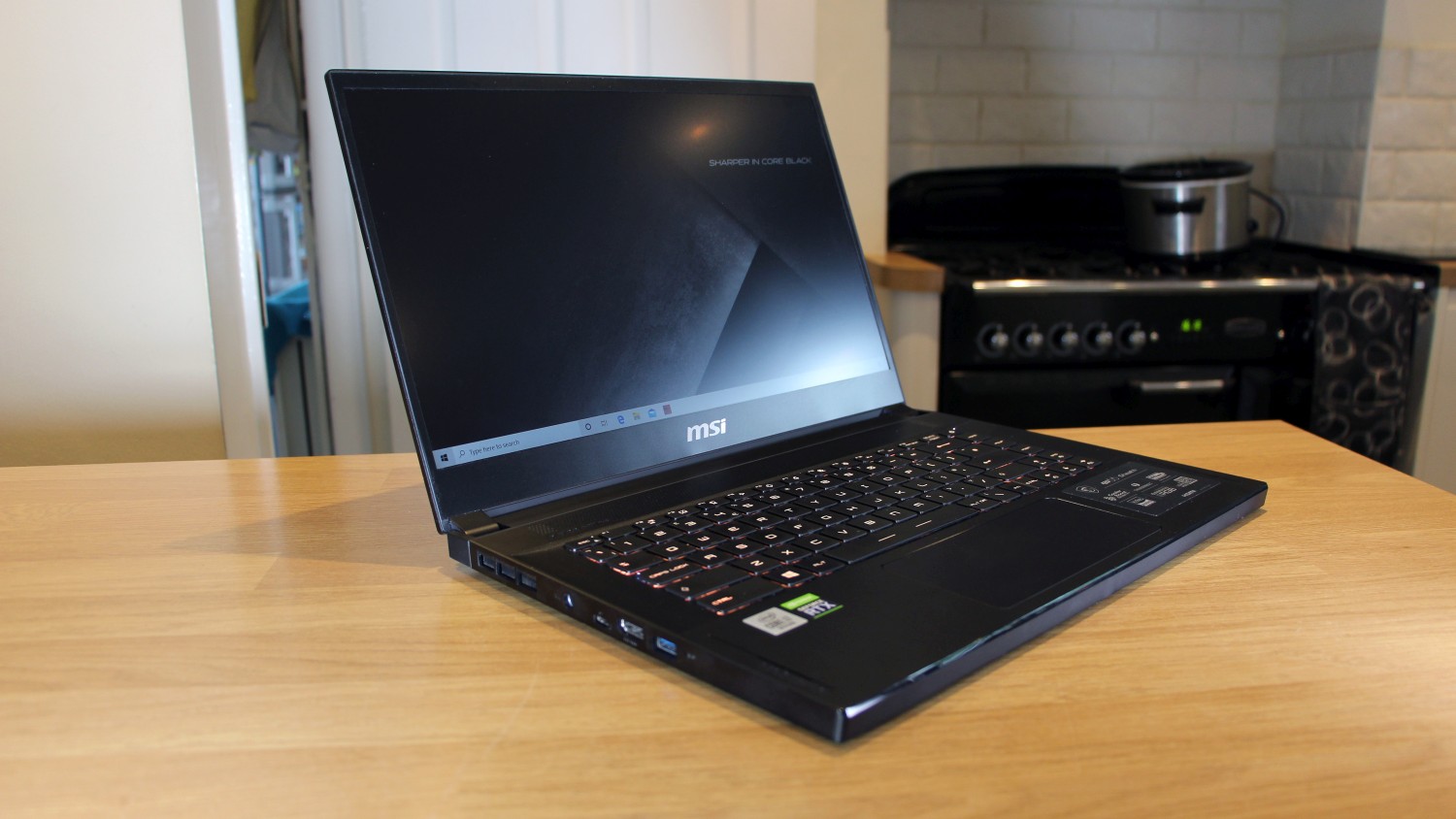TechRadar Verdict
The MSI GS66 Stealth has a brilliant 240Hz screen, good components and impressive ergonomics and connectivity, but rivals have better longevity, CPU power and design.
Pros
- +
Fantastic 240Hz screen
- +
Solid components throughout
- +
Good battery life, ergonomics and connectivity
Cons
- -
Rivals have more CPU power
- -
Some temperature issues
- -
240Hz screen is often unnecessary
Why you can trust TechRadar
Two-minute review
The MSI GS66 Stealth has had a sleek makeover when compared to older models, with black metal used throughout and a more subtle design. This laptop is practical, too: it has great USB and Thunderbolt connectivity on the outside, and both Wi-Fi 6 and 2.5Gbps Ethernet on the inside.
This machine is a little heavier and thicker than its predecessor, though, and that is where this rig starts to falter against some of its rivals. The latest Razer Blade 15 has similar design and dimensions, but the Asus Zephyrus G14 is lighter, slimmer and narrower thanks to a 14in screen.
The MSI GS66 Stealth has good ergonomics, though. Its keyboard is comfortable, fast and well-spaced – easily the match of any competitor, despite some minor layout issues and some missing functionality when compared to the Zephyrus G14. Meanwhile, the trackpad is wide and responsive.
This laptop has a deeply impressive display, too. The 240Hz refresh rate is lightning-quick, and it works best in esports games, where having such pace delivers a decent advantage. Quality is excellent, too, with impressive contrast and color accuracy.
The screen doesn’t have G-Sync, which does mean single-player games will be a little smoother on laptops that do include Nvidia’s technology. And, while the 240Hz screen is incredibly quick and smooth, the refresh rate doesn’t do much for single-player games and doesn’t deliver a huge leap when compared to 144Hz panel – it’s a diminishing return that only the best players will appreciate.
On the inside, the Nvidia RTX 2060 GPU delivers good gaming pace, with enough speed here to handle esports games at the speeds demanded by the 240Hz screen. It’ll also run single-player games at smooth framerates and high graphics settings, too, although pricier RTX 2070 and RTX 2080 GPUs will understandably be even quicker.
Intel’s 10th Gen Core i7-10750H chip is good, with ample speed for gaming, photo-editing, everyday computing and relatively demanding work tasks. This is one area where the Asus is miles better, though – its newer, faster AMD CPU is significantly better for productivity.
Sign up for breaking news, reviews, opinion, top tech deals, and more.
The MSI GS66 Stealth is inconsistent in thermal tests, too; it’s no louder than any rival, but the CPU gets too hot and its speed throttles, which hampers its working ability. And, while the MSI GS66 Stealth is good in battery tests, the Asus is a little better.
The MSI GS66 Stealth has a tremendous, fast-paced screen, great connectivity and ergonomics and decent battery life – alongside good components throughout. For demanding esports players, it’s a great option.
If you don’t want to play competitively, though, your money could go further elsewhere or you could save cash by ditching the 240Hz screen, and rivals like the Asus offers more CPU power and better battery life.
Price and availability
Here is the MSI GS66 Stealth configuration sent to TechRadar for review:
CPU: 2.6GHz Intel Core i7-10750H (6-core, 12MB cache)
Graphics: Nvidia GeForce RTX 2060 6GB
RAM: 16GB 2,666MHz DDR4
Screen: 15.6-inches, 1,920 x 1,080 non-touch 240Hz IPS
Storage: 512GB SSD
Ports: 3 x USB 3.2 Gen 2, 1 x Thunderbolt 3/USB 3.2 Gen 2 Type-C, 1 x USB 3.2 Gen 2 Type-C, 1 x audio, 1 x HDMI
Connectivity: Dual-band WiFi 6, 2.5Gbps Ethernet, Bluetooth 5.1
Camera: 720p Webcam
Weight: 4.6 pounds (2.1kg)
Size: 0.77 x 14 x 9.7 inches, 19.8 x 358 x 248mm (H x W x D)
The MSI GS66 Stealth that we’ve reviewed costs $1,617 (£1,699, around AU$3,000) and is one of the cheapest models from the new range. In the UK, look for part number 10SE-040UK; in the US, look for 10SE-039.
This model includes a 240Hz screen, RTX 2060 graphics, a Core i7-10750H CPU, 16GB of memory and a 512GB SSD.
These prices compare well with key rivals. The Razer Blade 15 isn’t available with an RTX 2060 and a 240Hz screen; to get a model with an RTX 2060, an Intel 10th Gen CPU and a 144Hz display you’ll have to spend a hefty $1,799 (£1,899, around AU$3,699).
For a faster display, you’ll have to spend $2,099 (£1,919, around AU$5,099) for an RTX 2070, a 9th Gen CPU and a 240Hz panel or $2,599 (£2,649, around AU$5,299) for a 10th Gen CPU, 300Hz screen and RTX 2070 Super Max-Q GPU.
The new Asus Zephyrus G14 is a smaller contender, with a new AMD CPU, RTX 2060 graphics and a 14in, 120Hz display. That machine costs $1,699 (£1,699, around AU$3,000), so it virtually matches the MSI when it comes to price.
The MSI GS66 Stealth is also available in several pricier configurations. Models that pair the 240Hz screen with RTX 2070 graphics hardware cost $2,599 (£2,099, around AU$3,799), and laptops with RTX 2070 Super and RTX 2080 Super GPUs and 300Hz screens range from $3,099 (£2,499, around AU$4,499) to $4,299 (£3,399, around AU$6,099).
Design
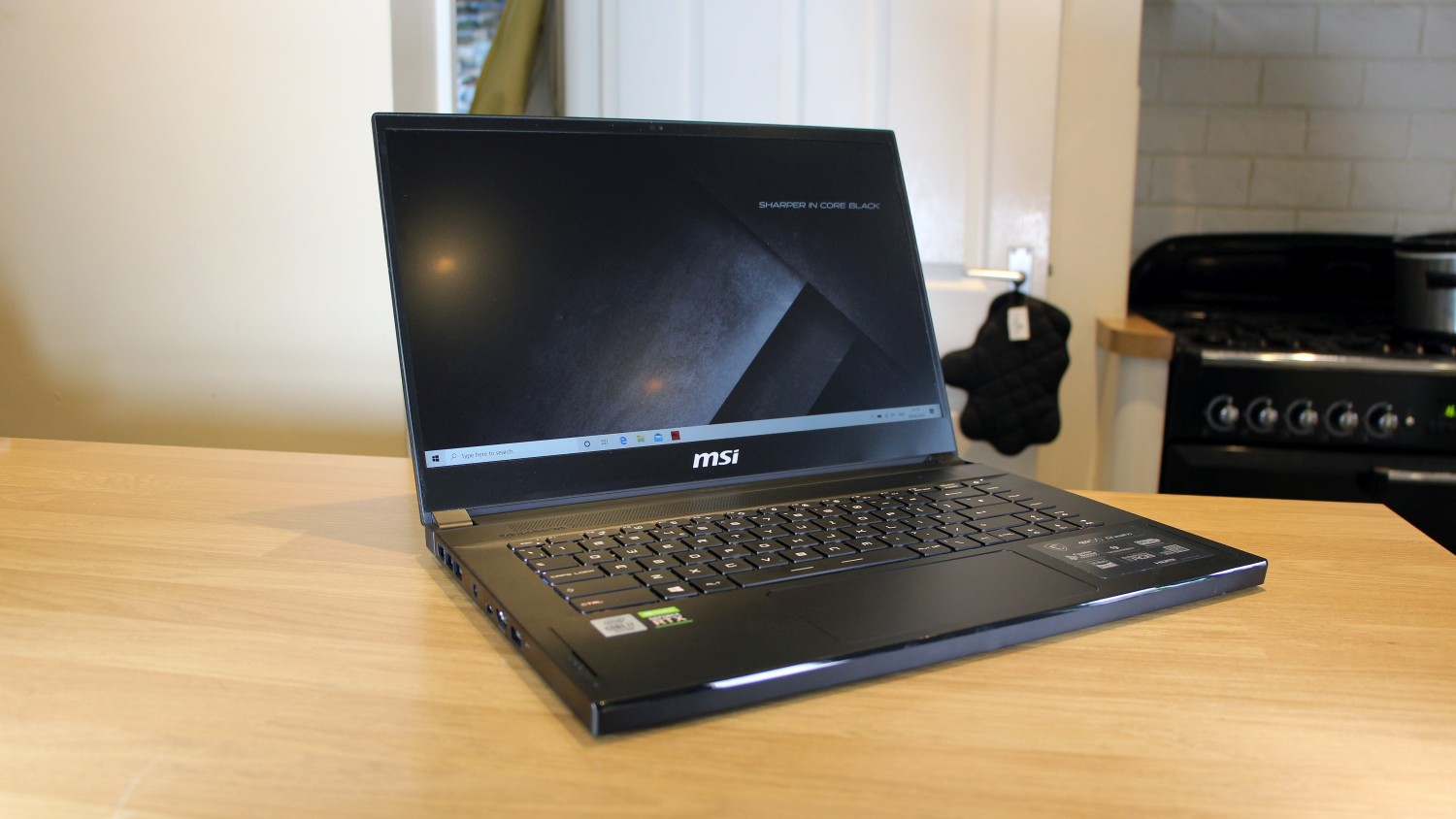
The MSI GS66 Stealth has had a makeover since last year’s impressive G65. The bold, gold accents have gone, replaced with black metal and subtle logos. This machine looks great, and build quality is impressive – it’s consistently robust, and easily the match of the Razer.
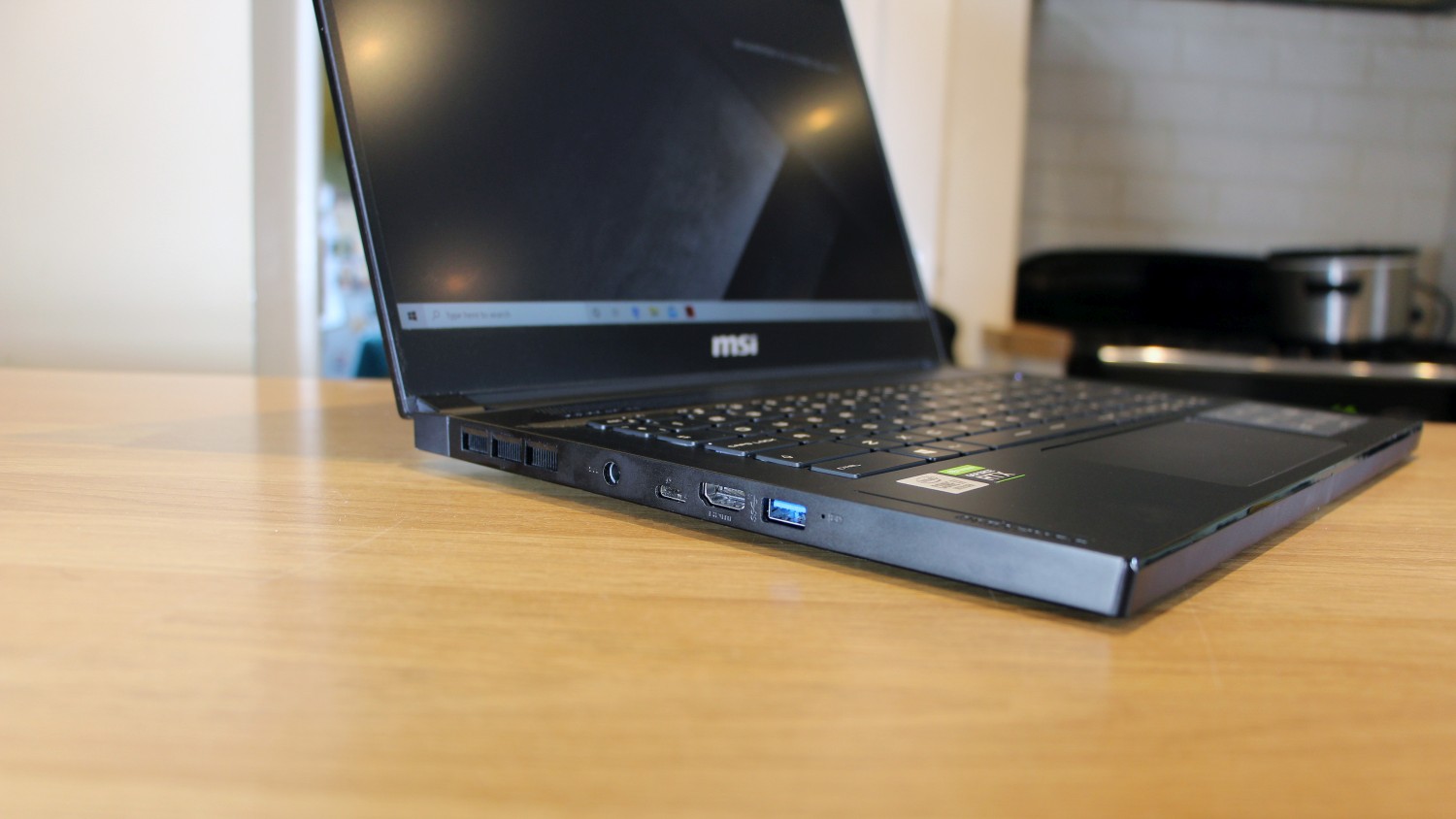
The MSI GS66 Stealth is good when it comes to connectivity – inside and out. It has three full-size USB 3.2 ports and two Type-C connectors, with one supporting Thunderbolt 3. There’s an HDMI output and a headphone jack. Internally, the MSI has WiFi 6 and super-fast 2.5Gbps Ethernet.
The Razer and Asus machines have similar USB options alongside Wi-Fi 6, but the Razer has slower Gigabit Ethernet and the Asus has no wired networking without an adapter.
The MSI GS66 Stealth is not the slimmest or lightest machine. It weighs 4.6 pounds (2.1kg) and it’s 0.77 inches (19.8mm) thick. The Razer has identical dimensions, but the Asus is more than a pound lighter, and thinner and narrower.
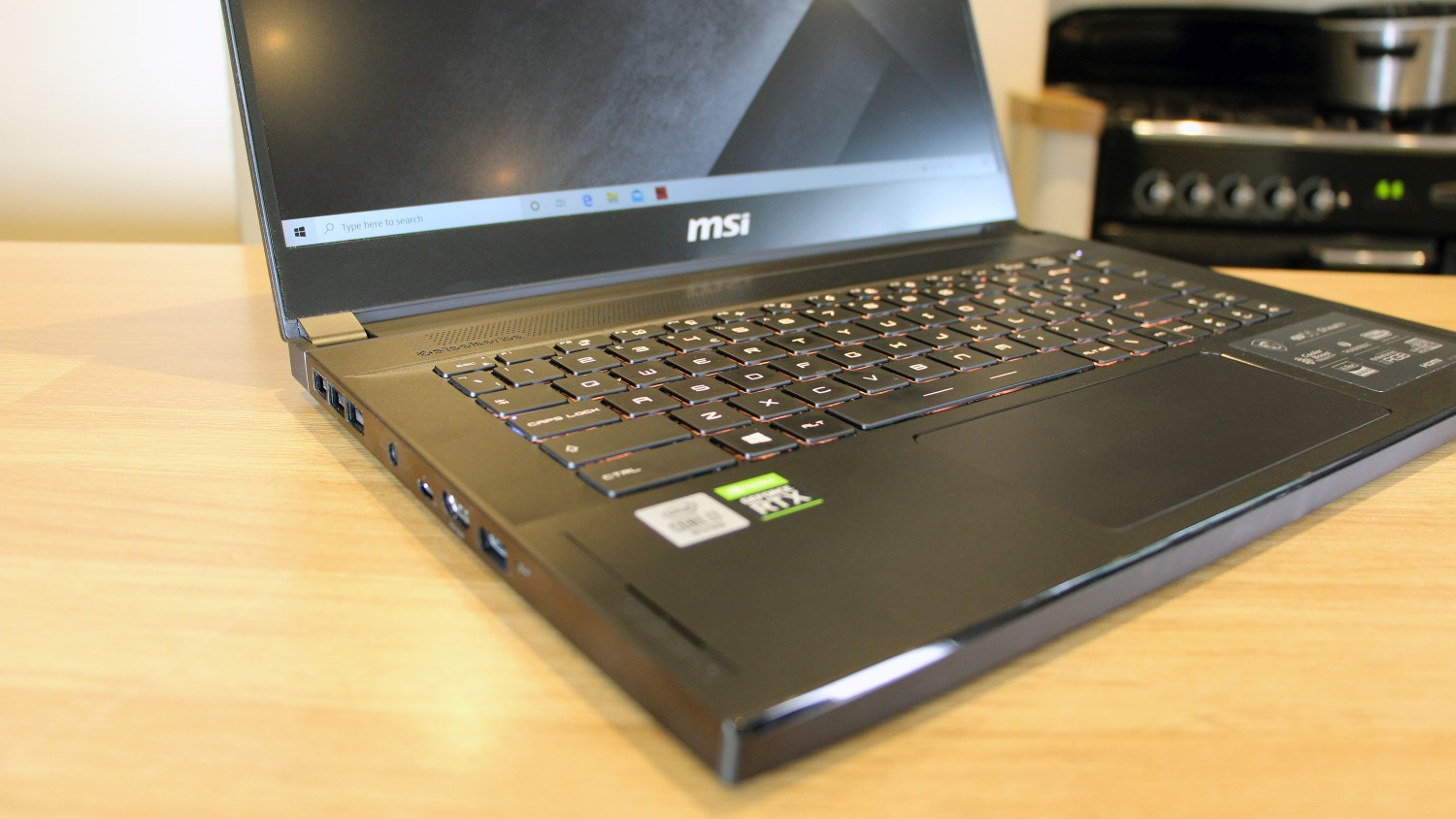
The MSI GS66 Stealth has a chiclet keyboard from SteelSeries. It’s excellent: the keys have 1.5mm of travel and a superb typing action that does a great job of balancing speed, snap and comfort. These buttons are consistent and fast, with enough pace to handle gaming.
The buttons are snappier than those on the Asus and they’re more comfortable than the Razer’s keys. They’re a little wider than those on rivals, and they have RGB LEDs.
The keyboard is not without fault, however. There’s no numberpad – something neither rival includes. The Function and right-hand Control buttons are tiny, and the Function row omits media shortcuts. The Asus unit goes one better with dedicated media keys.
Meanwhile, the trackpad is excellent: wide, accurate and responsive, with intuitive and comfortable buttons. A USB mouse remains better for gaming, but this is serviceable.

The MSI GS66 Stealth has a 240Hz 1080p display. That huge refresh rate is a boon for esports, where a faster screen can mean the difference between a win or a loss, and there’s no doubt that the refresh rate works well – this display is incredibly fast and smooth, even in the most hectic games.
However, remember that jumping from 144Hz to 240Hz offers diminishing returns to all but the most competitive players. It’s also not useful in most single-player games unless they’re particularly frantic. This screen also has no Nvidia G-Sync, which is not particularly important for esports but more effective in single-player games.
The screen has excellent quality. The brightness level of 324cd/m2 is plenty, and the contrast ratio of 1,246:1 is impressive – great for an IPS panel, and high enough to deliver vibrant visuals.
The Delta E of 1.37 is terrific, and means top-notch colour accuracy, and the screen’s uniformity didn’t vary by more than 12%, which is good for a gaming notebook. It handled 95.4% of the sRGB spectrum, but was below 70% in the DCI-P3 and Adobe RGB colour spaces.
This screen is just as good as the Razer’s display, and the MSI GS66 Stealth panel has better brightness and color accuracy than the Asus.
The MSI GS66 Stealth does have disappointing speakers. They’re loud, but they’re tinny and lack bass. Both rivals are more balanced, and a headset will deliver a better experience.
Performance
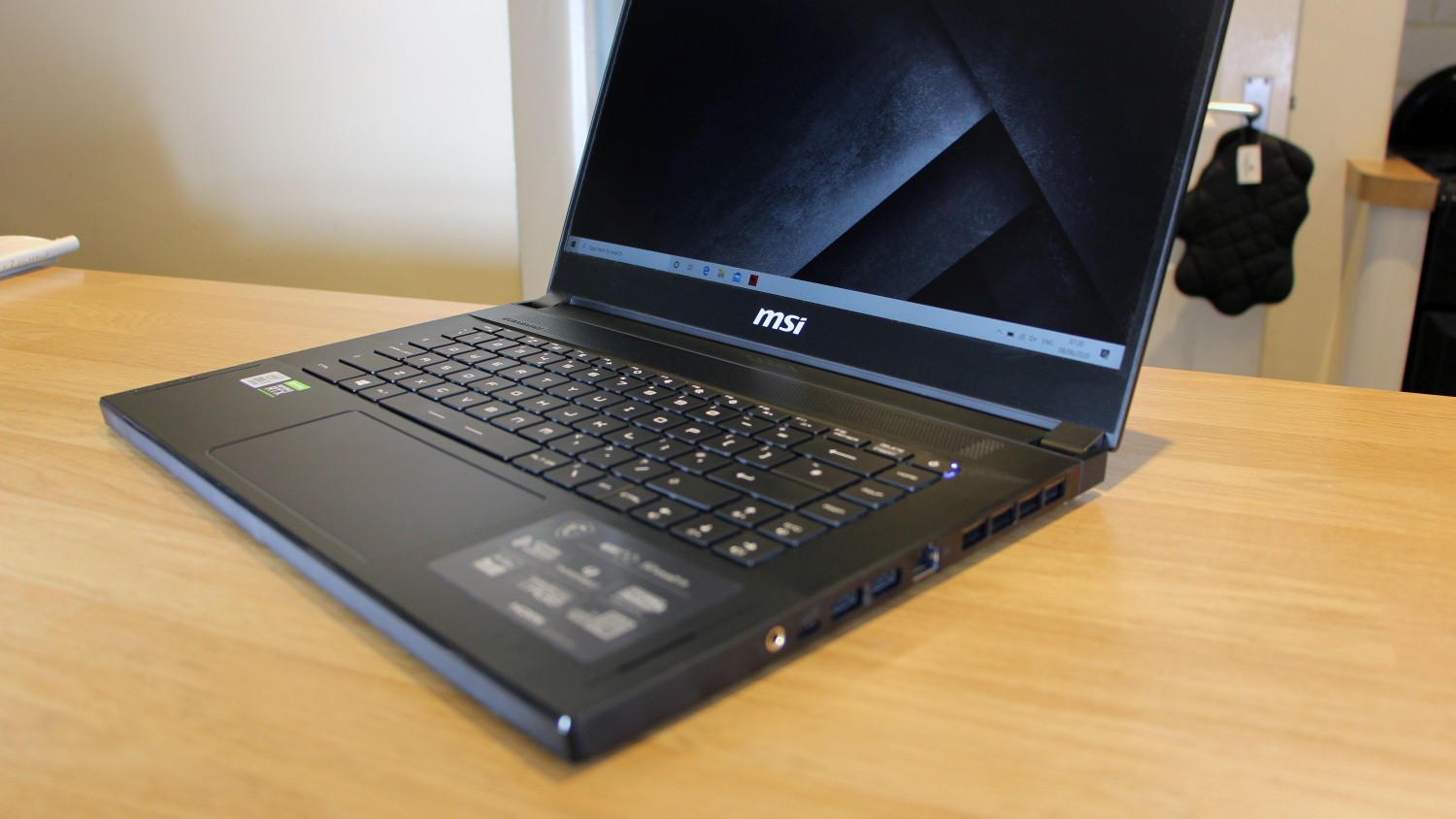
The MSI GS66 Stealth has solid components. An Intel i7-10750H processor with six cores alongside base and boost speeds of 2.6GHz and 5GHz, and the new 10th Gen architecture is bolstered by 16GB of DDR4 memory, and graphics grunt comes from an Nvidia GeForce RTX 2060 with 6GB of memory.
Here’s how the MSI GS66 Stealth performed in our suite of benchmark tests:
3DMark: Sky Diver: 34390; Fire Strike: 13612; Time Spy: 5810 (5714)
Cinebench 15 CPU: 1231cb; Graphics: 128.06fps
Cinebench 20 CPU: 2777 points
Geekbench 4 single-core: 5230; multi-core: 22505
Geekbench 5 single-core: 1178 (1113 balanced) (similar in silent mode); multi-core: 5957 (4958 balanced)
PC Mark 8 Home: 4362
PC Mark 10 Home: 5122
SSD: 3349/1960
Battery life (TechRadar movie test): 4 hours and 20 minutes
PC Mark 10 battery: 7 hours and 5 minutes
Total War: Three Kingdoms (1080p, Ultra) 43/47.7; (1080p, Low): 113/140.5
Red Dead Redemption II (1080p, Ultra) 31/52.9; (1080p, Low): 32.9/76.4
Shadow of the Tomb Raider (1080p, Ultra) 58/76; (1080p, Low): 87/116
Storage is handled by a 512GB SSD that delivered superb read and write speeds of 3,349MB/s and 1,960MB/s, and the removeable base panel reveals room to add two more NVMe SSDs – perhaps helpful when the 512GB could run out of space after only a handful of game installations.
The RTX 2060 the MSI GS66 comes with is a decent gaming GPU. It zipped through our three test games at Ultra settings with framerates at 48fps or beyond, and at Low settings it played two of those games at far beyond 100fps. When the vast majority of esports games are less demanding than single-player titles, it means that you’ll easily achieve framerates beyond 200fps on this laptop – which means you can take advantage of the 240Hz screen.
The Asus also had an RTX 2060, and there’s very little between these laptops in benchmarks – the MSI GS66 Stealth was marginally quicker in games, but the Asus’ better CPU gave it a slight advantage in 3D Mark.
Intel’s latest CPU generation does deliver a decent boost over older chips, and there’s enough power here to tackle productivity tasks – for photo-editing, high-end Office software and some light video work, the Core i7 is easily capable.
The Intel chip falls behind AMD’s latest laptop parts, though. The i7-10750H scored 1,178 and 5,957 points in Geekbench 5’s single- and multi-core tests, but the newer, more capable AMD Ryzen 9 4900HS in the Asus scored 1,202 and 7,815 points. AMD’s chip opened up similar gaps in Geekbench 4 and Cinebench R2.
The MSI GS66 Stealth is an inconsistent thermal performer. There’s fan noise present during gaming, but a headset will easily handle it and it’s no worse than either rival. Heat is a more pressing issue: hot air ejected from the right-hand side that could prove irritating to people using USB mice, and the keyboard and base panel both become too warm.
Internal temperatures can be an issue – the GPU is fine, but the CPU often surges beyond 90°C and throttles to its base speed of 2.6GHz. That means the MSI GS66 Stealth isn’t particularly suitable for high-end productivity workloads.
Battery life
The MSI GS66 Stealth has a 99.9Wh battery – as big as it can be without falling foul of aircraft battery size regulations.
This laptop does deliver good battery life: in our movie playback test it lasted for just over seven hours, and it ran for four hours and twenty minutes in a work benchmark. Unsurprisingly, longevity plummeted in a gaming test, where the MSI GS66 Stealth lasted for two hours and six minutes.
Those results are not bad – better than the Razer. However, the Asus was better, with an extra hour of lifespan in the movie test.
The MSI GS66 Stealth will handle a reasonable gaming session and half a day at the office, but you’ll need to plug in to get the best out of this machine.
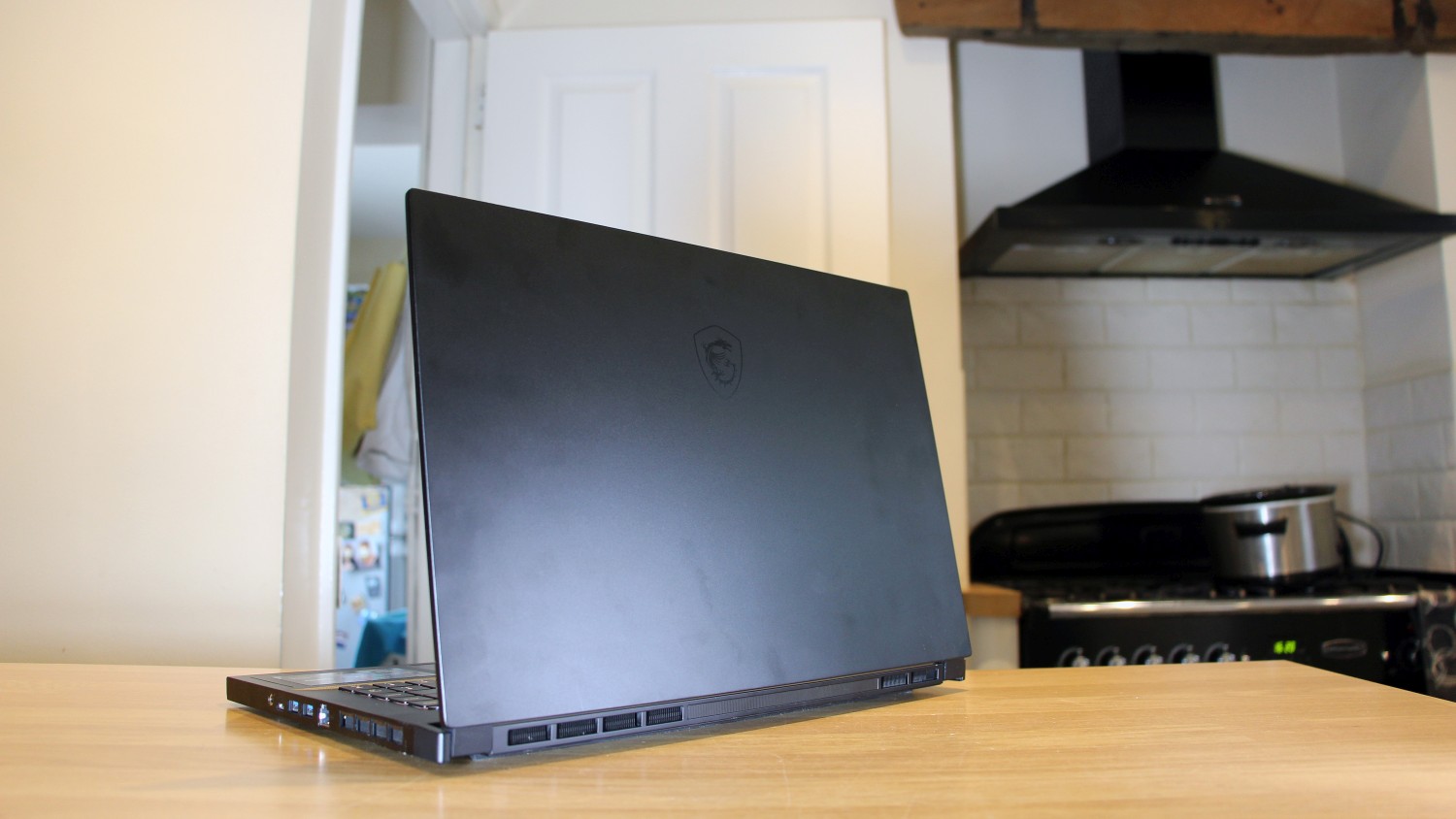
Buy it if...
You’re a serious esports player.
The 240Hz screen offers tremendous pace for handling frantic games, and the RTX 2060 delivers the framerates required. Only high-level players will truly benefit from the screen’s extra speed, but the MSI GS66 Stealth does offer a superb experience.
You want a well-rounded work and games machine.
The Intel CPU can’t compete with AMD’s hardware, but it’s hardly slow – and the rest of the components are decent, too. Combine those with great ergonomics and a top-notch screen, and this is a machine that can tackle most games and tasks.
You need a machine with great connectivity and slick design.
This laptop’s updated design looks great, and it goes one further than its rivals with excellent wired and wireless connectivity. It’s got a great selection of ports, too.
Don't buy it if...
You mainly play single-player games.
Single-player games don’t really benefit from the refresh rate jumping from 144Hz to 240Hz, so you could save yourself some cash by opting for a cheaper machine without the 240Hz display – or you could spend this amount on a machine with more GPU ability or a higher resolution.
You want to handle serious workloads.
The rival Asus machine uses a newer, more advanced AMD processor with more cores than the MSI GS66 Stealth’s Intel silicon. It’s far better for tough work tasks, so buy that notebook if you need a laptop for high-end productivity alongside games.
Your laptop needs to have market-leading battery life.
The MSI GS66 Stealth has great battery life, but the Asus is even better here. If you want to play games or handle work without plugging in, the latter machine is superior – and it’s slimmer and lighter too.
- These are the best gaming laptops of 2020
Mike has worked as a technology journalist for more than a decade and has written for most of the UK’s big technology titles alongside numerous global outlets. He loves PCs, laptops and any new hardware, and covers everything from the latest business trends to high-end gaming gear.
